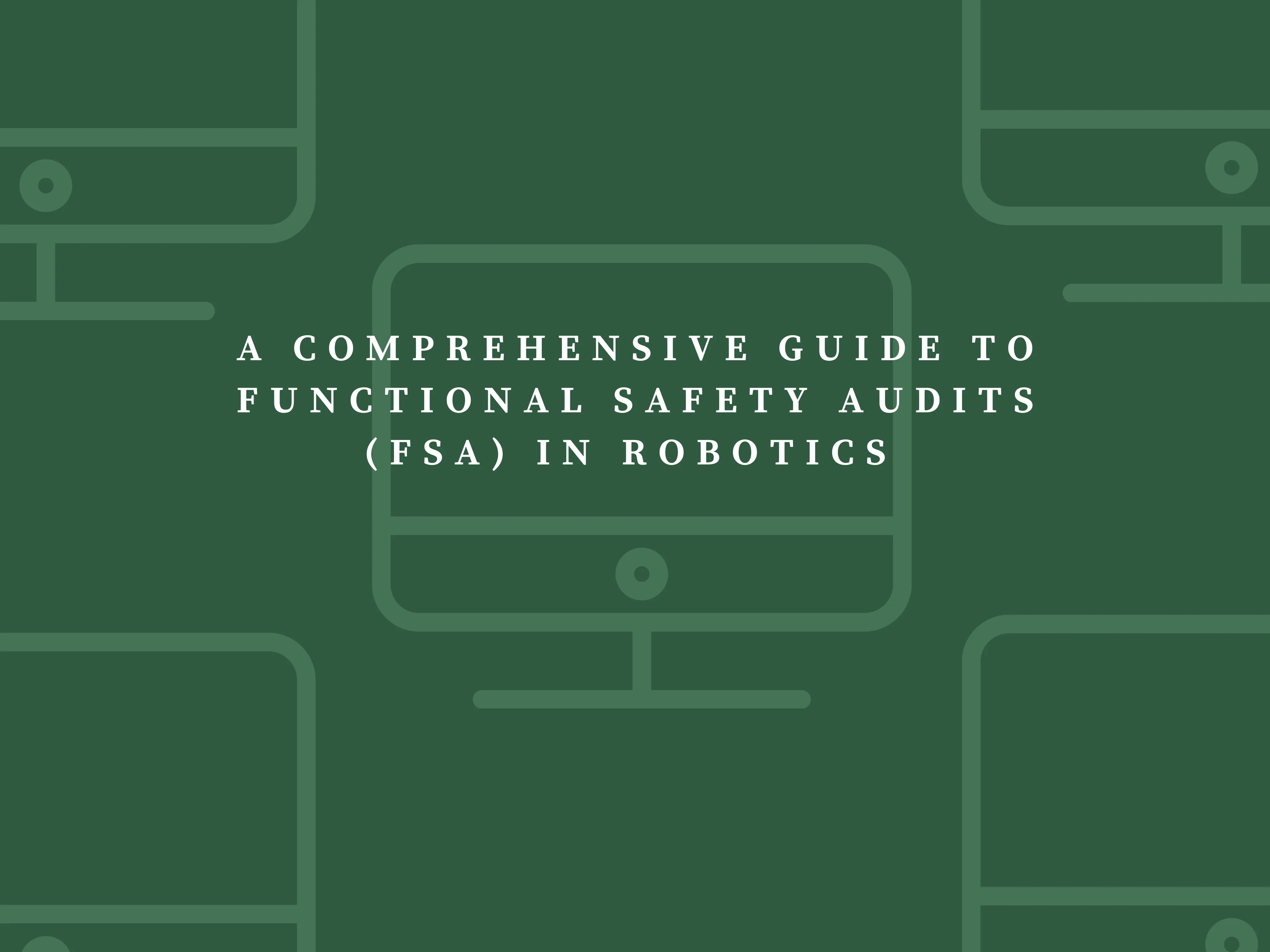Introduction: In the world of safety-critical systems, ensuring compliance and reliability is non-negotiable. Functional Safety Audits (FSA) are your key to maintaining standards compliance. This article will guide you through the FSA process, from choosing an appropriate auditor through performance of the official audit, providing valuable insights for safety managers and professionals in the robotics industry.
Understanding the Importance of Functional Safety Audits: Functional Safety Audits are systematic evaluations designed to verify that safety-related systems comply with relevant standards and regulations such as IEC 61508. They ensure that safety functions are correctly implemented and maintained throughout the system’s lifecycle. Think of them as the Sherlock Holmes of safety, meticulously investigating every nook and cranny to ensure nothing is amiss.
Choosing the Right Audit Body: Selecting a credible audit body is crucial.
Ensure the audit body is accredited by recognized organizations like TÜV SÜD or ABB. Accreditation is like having a Michelin star for auditors—it guarantees a certain level of quality and expertise.
Look for bodies with extensive experience in your industry and similar projects. You wouldn’t hire a pastry chef to grill a steak, right? Expertise matters. Independence is also key; the audit body should be unbiased, like a good referee in a soccer match.
Check their reputation and references. A quick look at reviews, case studies, and references from previous clients can save you from potential headaches.
Conducting the Audit: A thorough audit involves several key steps. Start with planning and preparation. Define the audit scope, objectives, and criteria. Having agreement on these key items with your auditor is crucial to making sure things go as smoothly as possible during the audit process. Gather relevant documentation and prepare the audit team. This is your game plan, your blueprint for success.
Pre-audit: Before the official assessor audit, conducting a pre-audit can be incredibly valuable. This internal review helps identify potential gaps and areas of non-compliance. During the pre-audit, inspect the site, interview staff, and assess compliance with safety standards based on the risk assessment results. Documentation review is another critical step. Examine safety documentation, including risk assessments, safety plans, and test reports. Think of it as reading the fine print before signing a contract. The goal here is to implement potential fixes to gaps before bringing in the external auditing body. This proactive approach can make the official audit process smoother and more efficient.
Different auditors may have slight variations in their audit approaches, but the overall goal is to show compliance with the standards you are being evaluated against, ensuring safe operation. This is often done through the use of compliance matrices or conformity reports, which are often available for internal pre-audits to help ensure the official audits go smoothly.
Reporting findings is where the auditor documents findings, highlight areas of non-compliance, and provides recommendations for improvement. It’s like giving a report card, but for safety. The auditor will report their findings to you, and it’s crucial to have a follow-up discussion to ensure you are on the same page about what is needed to attain compliance. This follow-up is essential for clarifying any misunderstandings and agreeing on the next steps.
Follow-up and Continuous Improvement: Post-audit activities are essential for ensuring ongoing compliance. Develop an action plan to address audit findings and implement corrective measures. This is your to-do list, your roadmap to compliance. Once the corrective measures are implemented, attaining certification is the next milestone. This certification formally acknowledges that your system meets the required functional safety standards.
After certification, it's important to have an appropriate change management system in place. This system ensures that any future changes are performed in a way that maintains compliance. Regularly monitor the implementation of corrective actions and review their effectiveness. It’s like checking your rearview mirror while driving—essential for staying on course. Promote a culture of continuous improvement by regularly updating safety practices and procedures. Remember, safety is a journey, not a destination.
Conclusion: Functional Safety Audits are vital for ensuring the integrity and reliability of safety-related systems. By following a structured design approach and choosing the right audit body, organizations can maintain high levels of product safety and ensure ongoing standards compliance.
In the robotics industry, the approach to FSAs can vary significantly. While some robotics applications adhere to rigorous safety assessments similar to those in the automotive industry, others may have more flexible or less formal processes. This variability highlights the importance of tailoring the FSA approach to the specific needs and risks of each project. Ensuring that the chosen assessment body and process are appropriate for the specific context of the robotics application is crucial for achieving reliable and safe systems. So, next time you think about skipping that audit, remember safety first, because accidents last.
